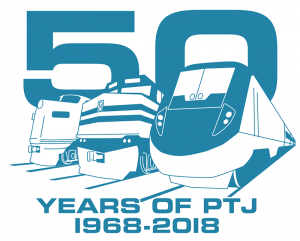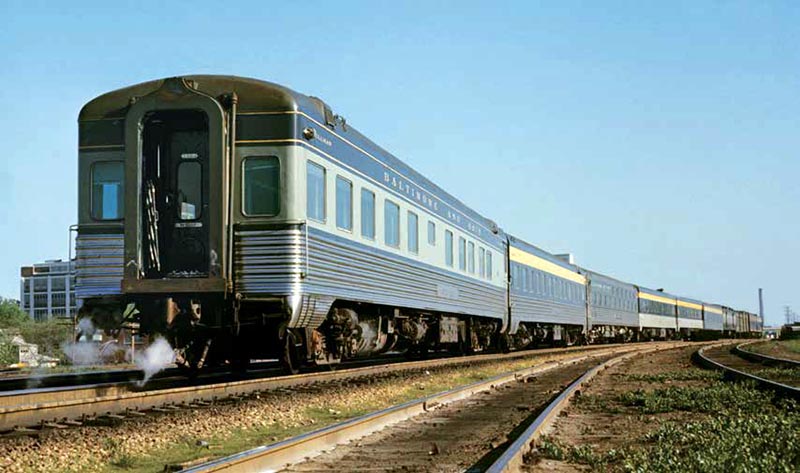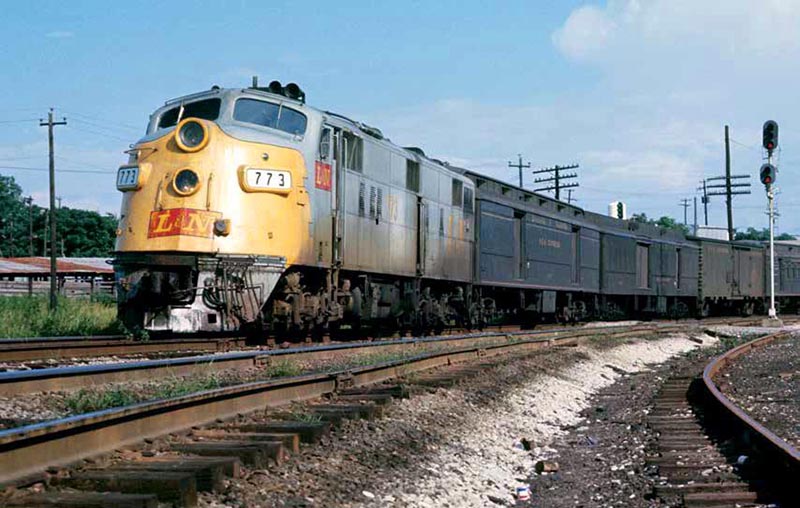 By Kevin McKinney/photos as noted
By Kevin McKinney/photos as noted
When the first issue of Passenger Train Journal hit the street in 1968, the United States’ intercity rail-passenger network was in free fall and, with just a few notable exceptions, the mode’s future looked increasingly bleak.
The last good year for the American passenger train, it could be argued, was 1966. Although 1966 may have seemed like just another year in the almost steady overall decline in ridership and trains since postwar optimism started evaporating in the early 1950s, in retrospect that year seemed to have it all.
Mail and express were still mainstays of intercity passenger service and because of all that “head-end” traffic, routes were widespread and multiple frequencies were still common. Railroads that had known their marketplace demanded differentiation, and many routes featured a premium train; an “accommodation” train, serving the needs of the Post Office, the Railway Express Agency and local passengers; and other trains that offered something in between those two extremes.
Mergers and train-offs had not yet reduced the number of competing routes, so it was possible to get from Chicago to Los Angeles via the Santa Fe, Union Pacific, or a Rock Island-Southern Pacific routing. Seaboard and Atlantic Coast Line had separate routes and unique offerings between the Northeast and Florida. And so it went.

Baltimore & Ohio’s Washington, D.C.–Chicago Capitol Limited was noteworthy in 1968 for retaining its streamlined observation sleeper-lounge car, when the added expense of operating such equipment had led to its elimination on a host of other roads. The train’s mismatched equipment in these two views at Brighton Park interlocking in Chicago reflected joint management and operation of B&O and Chesapeake & Ohio, united since 1962 and destined to become more closely entwined under the Chessie System banner in 1972. Behind the head-end cars, the train is carrying two coaches, a diner-lounge, a sleeper, and sleeper-lounge Metcalf. Photo by Mike Schafer
A real national network still existed, not the bare-bones Amtrak “network” of today that features huge gaps, and one daily train per route at best, yet somehow is a burden to operate.
Special trains still took football fans to East Lansing, Mich., and other sports meccas, students to Washington, D.C., and Boy Scouts to any number of destinations. Railroads such as the Burlington and Grand Trunk Western generated additional revenue and goodwill running steam excursions. All this somehow never got in the way of their “core” mission of running regularly scheduled high-quality passenger trains, or freight trains for that matter.
High-quality trains were many. The Panama Limited and Broadway Limited were still all-Pullman. The Twentieth Century Limited had two or three coaches, but was still quite a train, and managed to cover the Chicago–New York run in 16 hours, compared to nearly 20 hours for today’s Lake Shore Limited on the same route. Today’s single route and single train is all that links the United States’ largest and third-largest metro politan areas, but in 1966 it was possible to travel on the New York Central via Cleveland or Detroit (for the latter, crossing through Canada to do so); the Pennsylvania via Pittsburgh; the Erie Lackawanna via Youngstown. Out west, it seemed like the postwar renaissance was still in swing, with superb trains such as the Super Chief, El Capitan, City of Los Angeles, California Zephyr, Empire Builder, and North Coast Limited nearly all featuring dome cars, incomparable dining car service, and a variety of accommodations.

On its last legs during its final weeks of service, the tattered remains of the once-famed Rock Island-Southern Pacific Golden State amble into Joliet in January 1968 with but a single sleeper, coach, and diner-lounge. The once-esteemed transcon would make its final run in March 1968. Photo by Mike Schafer
Not to mention the trains generally ran on-time or close to it. Most railroads still took pride in the retail side of the house and realized that a well-run passenger service not only presented a good impression to freight shippers, but also instilled discipline into their freight service.
To top it off, 1966 featured the finest hour of the passenger train in the immediate pre-Amtrak era, as a 43-day airline strike in July and August reacquainted many passengers with their local train station. The railroads still had enough equipment on hand to rise to the occasion, and rise they did…
 Read the rest of this article in the 2018-02 issue of Passenger Train Journal
Read the rest of this article in the 2018-02 issue of Passenger Train Journal


